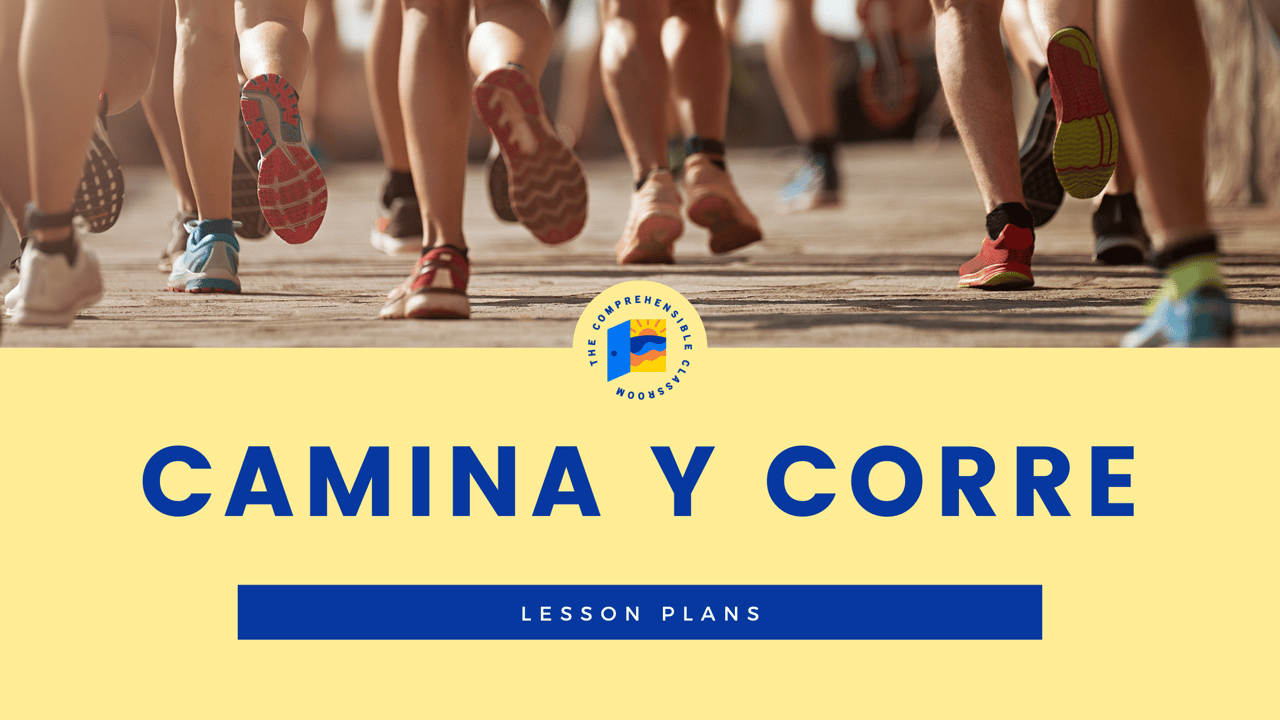This is a unit that should be taught within the first few weeks of Spanish I. I teach it after we have learned girl, boy, school, student, teacher, says, likes, what's your name, my name is, how are you, I am... Everything marked with an asterisk* can be downloaded here.
DAY ONE
- *Campanada: Translate «Éste es un muchacho. Él se llama Marcos. A Marcos le gusta el color rojo». (This is a boy. His name is Marcos. He likes the color red.)
- Introduce vocabulary for Camina y corre (Have students enter definitions in their dictionaries and teach gestures)
- *Introduce Song: ¡Corre!
- Continue introducing vocabulary (sentence translation, questions for individual response--could be assigned as homework)
DAY TWO
- *Campanada: Fill in the missing words in Spanish, then translate the entire paragraph to English: «Mauricio es un _______ inteligente. Mauricio _______ a Clark Middle School con sus amigos». (Mauricio is an intelligent (BOY). Mauricio (WALKS/RUNS) to Clark Middle School with his friends.)
- Choose a Cantaninja to choose a time to listen to the song of the week
- Review target structures (camina, corre, ve)
- Finish introducing vocab (Class discussion questions, most likely)
- If time, begin asking the story
DAY THREE
*Campanada: Translate to Spanish: "This is a girl. Her name is Silvia. She walks to school. She sees a boy."
- Choose a Cantaninja for a song break
- Finish storyasking
- If you have time to spare, review the story by having individual students come to the board and IN 30 SECONDS draw a scene from the story, sequentially starting from the beginning, then have the class say (in the target language) what is happening in the picture.
Stop with a few minutes left in the period to do a formative up/down listening assessment
DAY FOUR
- *Campanada: "Write down anything that you can remember from yesterday's story IN SPANISH."
- Choose a Cantaninja for a song break.
- Story review: Project a typed version of the class story onto the board. Read through it as a class (in Spanish) while you circle each sentence. For example, after you read "Cristal es una muchacha", pause the class readaloud and ask, "¿Cristal es una muchacha o es un muchacho?" "¿Qué es Cristal?" "¿Cómo se llama la muchacha?" etc. Check for comprehension as you go. After you've read the entire thing, ask several comprehension questions about it in English. Have students come up and highlight the sentence that contains the answer (if you have a Smart/Promethean Board...otherwise have them come up and "underline" the sentence with their finger).
- Simultaneous presentations: Have each student draw a scene from the story on a half sheet of scrap paper. Each student should explain what is happening in the scene--IN SPANISH--to ten classmates using the simultaneous presentation format.
- *Writing assessment: Give students the writing assessment form. They must write two SPANISH sentences to describe each of the three pictures, and they must use the words "walks", "runs", and "sees" at least once. The form contains a rubric for grading and questions to help them think of what to write.

DAY FIVE
- *Campanada: Translate, "This is a girl, and her name is Victoria. She walks to school. A boy named Patricio runs to school!"
- *Reading assessment: Combine several of your students' writing assessments yesterday to create an original story for this storyboard (the same as the one on the writing assessment), or use the one that I created from my students' work. Give the students reading comprehension questions in English based on the reading.
- *Authentic reading: Give students the "Camina o corre por el autismo" worksheets (or send them to the websites) and the comprehension questions to answer. They could work individually or in partners (recommended, since this is challenging!!)
DAY SIX
- *Campanada: Translate, "Roberto is a boy and he runs to school. He sees two girls named María and Karen, and they walk with Roberto."
- *Listening assessment: Read a short story about walking, running, and seeing to the students and have them respond to comprehension questions.
- Introduce vocabulary for your next unit...I'd recommend "Cierra la puerta"




